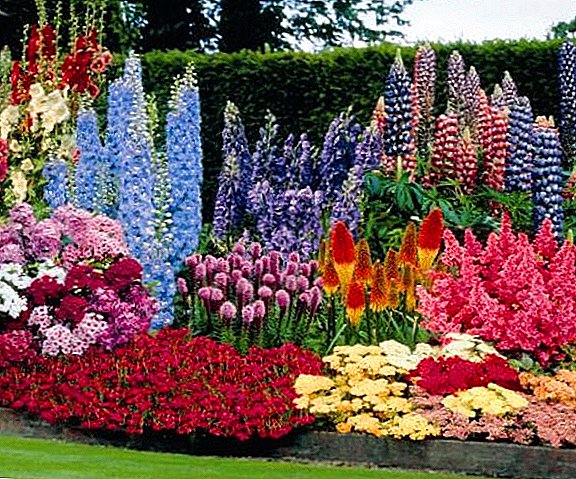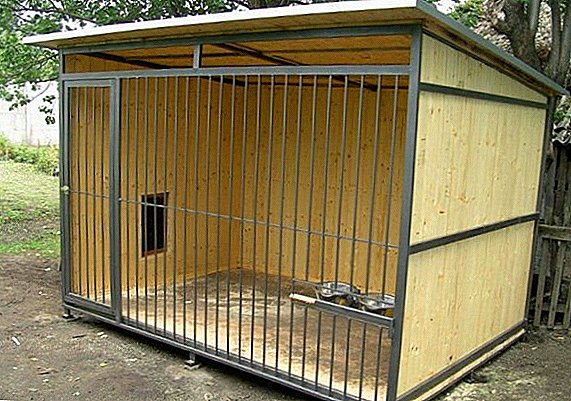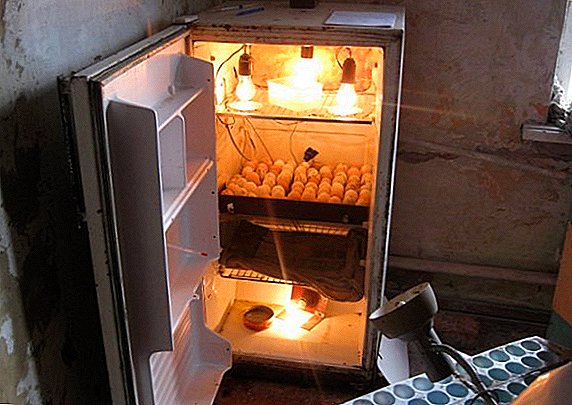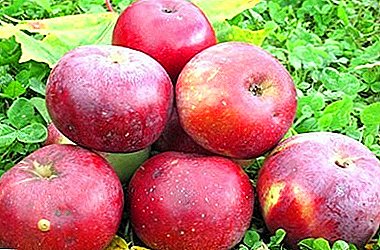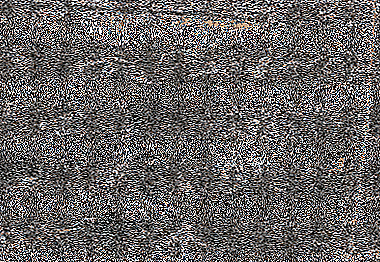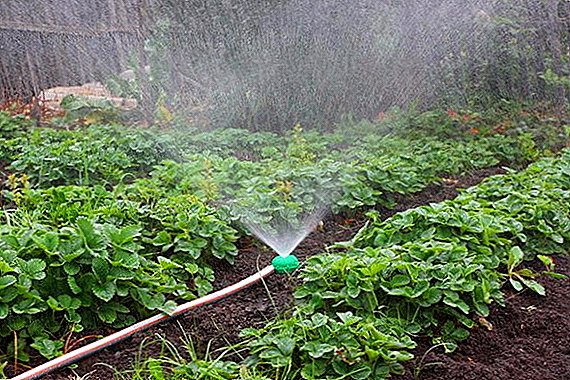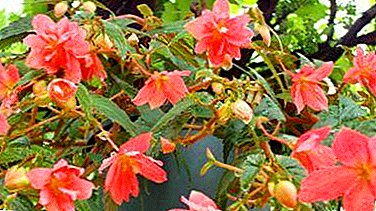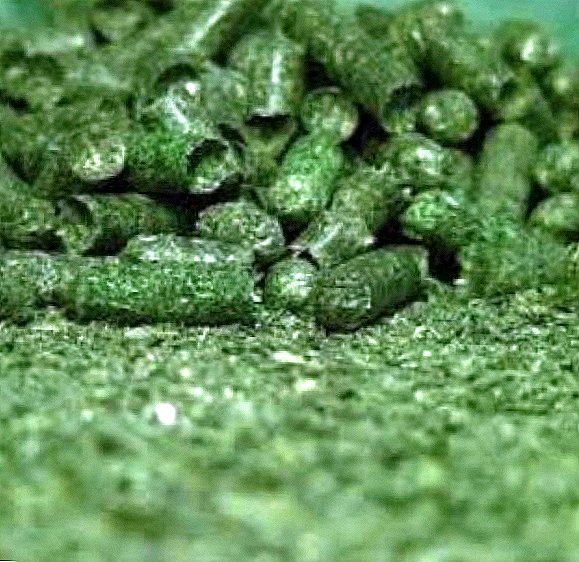 The best food for any herbivore is plant food. For many centuries, our ancestors prepared this important food for the winter. Often harvested hay, which was dried under natural conditions. But with such a drying grass lose useful elements.
The best food for any herbivore is plant food. For many centuries, our ancestors prepared this important food for the winter. Often harvested hay, which was dried under natural conditions. But with such a drying grass lose useful elements.
An alternative option for hay harvesting is grass flour. In this article we will look at what it is, its composition and application.
Grass meal
In the agricultural sphere of the USSR, this animal feed has been known since the 60s of the XX century. It was at this time that the “Recommendation on Increasing the Production and Improving the Quality of Herbal Vitamin Flour” was published. The publication of this document became the basis for the industrial production of this green fodder. However, this is not a new technology, it originated in the 20s of the last century in the United States.
Learn also what a feed is, how to prepare feed for poultry, on the agrotechnology of growing sorghum for food and on the preparation of hay-type feed.
Grass meal - It is a source of nutrients that are part of the young shoots of herbaceous plants, it is a valuable food for all representatives of agricultural animals. In terms of protein content, dry powder of young herbs is comparable to cereal feeds, however, it surpasses them in biological value.  With the traditional method of harvesting hay, up to 60% of nutrients are lost. And in the period of global optimization of production, effective methods of processing such a valuable product as grass are required. This method was the artificial drying of green fodder. In the process of such a billet up to 95% of nutrients is retained.
With the traditional method of harvesting hay, up to 60% of nutrients are lost. And in the period of global optimization of production, effective methods of processing such a valuable product as grass are required. This method was the artificial drying of green fodder. In the process of such a billet up to 95% of nutrients is retained.
The production of grass meal begins with the collection of perennial and annual herbs in the early stages of the growing season. So, for the manufacture of flour from leguminous plants, they mow before the beginning of budding, and of cereals - before the beginning of earing. To preserve all the nutrients, freshly cut grass must be dried in a short time.
Artificial drying of green fodder is carried out at high temperatures, which has been previously ground. Drying the grass takes no more than a few seconds, which will allow you to quickly and efficiently process raw materials. After the drying stage, the green fodder is ground to a flour consistency. Some manufacturers for more convenient use produce granulation products.
Important! After six months of storage, ungranded green fodder loses approximately half of the carotene.
This method of preparation provides 1.5–2 times more protein, 3–3.5 times more carbohydrates, and up to 14 times more carotene than when harvesting hay. Thus, for one kilogram of grass meal there are 100-140 g of protein, 180-300 mg of carotene, up to 250 g of fiber.
Green food is a valuable source of vitamins K, E, C, PP and group B. It also contains such mineral substances as calcium, potassium, magnesium, sodium, iron and others. One of the most important indicators of green fodder is the content of a large number of essential amino acids and the absence of chemical additives. It should be noted that depending on the species of plants used, the value of the herbaceous powder may vary.  The nutritional value of green fodder depends on the amount of carotene in the flour. The content of carotene in plants with well-developed foliage is higher. Such plants are also rich in protein and other beneficial elements. In this regard, several varieties of green powder are produced.
The nutritional value of green fodder depends on the amount of carotene in the flour. The content of carotene in plants with well-developed foliage is higher. Such plants are also rich in protein and other beneficial elements. In this regard, several varieties of green powder are produced.
Types of flour
Herbal flour is made on the basis of freshly cut herbs of various plants. It can be legumes, cereals and forbs. A variety of plants that are used to prepare green fodder can change not only the composition of nutritional components, but also the use of the product.
To the family of cereals include: chumizu, feather grass, citronella, timothy grass, bluegrass meadow, hedgehog team.
Alfalfa Herb Flour
Lucerne is a perennial plant of the legume family, which is highly nutritious. Food based on alfalfa is rich in protein and vitamin feed, and green powder based on it has a high nutritional value in comparison with other varieties of herbal powder. This type of feed can be used as the main feed, and in the form of vitamin supplements.
Alfalfa flour is distinguished by its nutritional value and contains 15-17% protein, 26-30% fiber, at least 1.5% fat and 10-12% moisture. If you compare it with other foods, for example, with oats, then this food has a more balanced composition of calcium and vitamins.  Herbal alfalfa powder in 1 kilogram contains 0.67 feed units, 149 g of protein, 232 g of fiber. The composition of alfalfa powder includes amino acids such as lysine, methionine, cystine, tryptophan, their content varies from 3 to 12 g per 1 kg.
Herbal alfalfa powder in 1 kilogram contains 0.67 feed units, 149 g of protein, 232 g of fiber. The composition of alfalfa powder includes amino acids such as lysine, methionine, cystine, tryptophan, their content varies from 3 to 12 g per 1 kg.
It is also necessary to note the high content of such macro elements as calcium (14.1 g / kg), potassium (8.8 g / kg), magnesium (2.6 g / kg), phosphorus (2 g / kg) and sodium (0 , 9 g / kg). The composition of alfalfa flour contains 376 mg of iron, 6.5 mg of copper, 15.8 mg of zinc and 0.19 mg of iodine.
Did you know? No herbivore has claws.
Carotene, which is part of the green food, helps to normalize the metabolism, and its content in 1 kg of powder is 280 mg. It is also necessary to note the content of such vitamins as D, E, C and group B. These vitamins help to maintain the health of animals, prevent diseases of the nervous system, strengthen bones and regulate the reproductive ability of an animal.
Although this type of herbal flour has a high nutritional value, its incorrect use can cause irreparable harm. For example, it can cause protein poisoning, and a large amount of calcium requires additionally to enter a certain amount of phosphorus in the diet in order to observe the potassium-phosphorus balance.
Legume Herb Flour
This powder is made from clover, peas, vetch and other representatives of the legume family. Flour is produced from harvested leguminous plants before the formation of buds on them. Such cultures contain a large amount of protein, which can reach 17%.  The nutritional value of such feed is 0.66 feed units. The composition of one kilogram of legume green fodder includes 140 g of crude protein, 88 mg of carotene and 235 g of fiber. The rich mineral composition includes 13.9 g of calcium, 21.36 g of potassium, 3.38 g of sodium, 2.05 g of magnesium, 2.2 g of phosphorus, 336.42 mg of iron, 19.58 mg of iodine. Herbal powder from legumes contains vitamins D, E, B1, B2, B3, B4, B5.
The nutritional value of such feed is 0.66 feed units. The composition of one kilogram of legume green fodder includes 140 g of crude protein, 88 mg of carotene and 235 g of fiber. The rich mineral composition includes 13.9 g of calcium, 21.36 g of potassium, 3.38 g of sodium, 2.05 g of magnesium, 2.2 g of phosphorus, 336.42 mg of iron, 19.58 mg of iodine. Herbal powder from legumes contains vitamins D, E, B1, B2, B3, B4, B5.
However, this type of food loses carotene faster than cereal. In this regard, it is necessary to use it first.
Herbal Herb Flour
For the production of this type of grass meal, yarrow, reed grass, pasture and other meadow herbs are used. This type of grass has no restrictions in use and is a good substitute for low quality hay.
Herbal grass meal has a lower nutritional value compared to alfalfa and bean grass meal and is only 0.63 feed units. It is also inferior in protein content (the amount of crude protein is 119.7 g / kg).
However, in the content of fiber and carotene such a grain feed exceeds the above, their number is 248.2 g and 118 mg, respectively. It should be noted that the motley grass powder is rich in the content of mineral and vitamin substances. 1 kg of the green mixture contains 10.3 g of calcium, 19.3 g of potassium, 2.6 g of sodium, 5.1 g of magnesium, 683 mg of iron, 649.2 mg of vitamin B4, 101.7 mg of vitamin E and other elements .
This type of feed is used when necessary to reduce the amount of starch in the diet of animals. In this case, he can partially or fully replace oats.
Where applicable
Granular herbal powder is used, in fact, as an improver of compound feed for cattle, horses, poultry or pigs. This is due to the fact that food, consisting of grains, is poor in vitamins. Especially important is the introduction of complementary foods in winter, when there is a lack of carotene in the animals ’diet.  Herbal powder successfully replaces animal feed. So, 1 kg of alfalfa flour replaces 1 kg of fish oil. At the same time, it contains important amino acids that are not in fat.
Herbal powder successfully replaces animal feed. So, 1 kg of alfalfa flour replaces 1 kg of fish oil. At the same time, it contains important amino acids that are not in fat.
For example. Studies conducted by Dukchinsky Poultry Farm LLC (Magadan) showed that adding 4% of herbal powder to the diet increases egg production by 7.6%, the average egg weight increases by 5.7%, and the increase in egg mass one layer is 17.6%.
The content of nutrients in the egg also increased: by 2.7% more carotene, calcium - by 7.5% and phosphorus - by 5.9%. Feed costs for 10 eggs are reduced by 6.7%.
Did you know? Grass meal is a part of chinchilla granulated feed.
Flour dosage
Experts recommend the use of grass food for both young and adult individuals. In practice, it is most effective to add the following amount of green flour to the feed:
- For rabbits: 35% grass meal, 25% ground barley, 15% ground corn, 5% bran from wheat, and 20% corn. With this diet, the rabbit gets enough fiber important to it. It ensures the proper functioning of animal digestion and significantly increases meat gain.
- For pigs: 20% herbal powder, 20% ground corn, 20% ground barley, 10% ground wheat, 30% sunflower meal and 0.2% table salt. As in the case of rabbits, fiber plays a key role in the diet of the animal. It allows you to avoid many diseases, increase the gain of meat and ensure proper digestion of pigs. Also, when feeding sows, they increase the production of milk for piglets.
- For laying hens: 15% herbal powder, 25% ground wheat, 25% ground barley, 17% ground corn, 15% sunflower meal, 3% ground shells. It is important not to overdo the meal, so as not to increase the fat content of the feed and not reduce egg production.
- For cows: 25% grass meal, 20% ground barley, 15% bran, 15% corn, 25% sunflower meal, 0.5% salt. One feed for feeding the cow is not enough, but in no case should it be excluded from the diet.

Important! It is not recommended to boil or steam herbal flour, as it will lose its beneficial properties.
Grass meal is a good example of the truth of the proverb "Everything new is well forgotten old." Although for some this type is a new type of animal feed. However, this technology has been tested by time and has shown its effectiveness in use.


